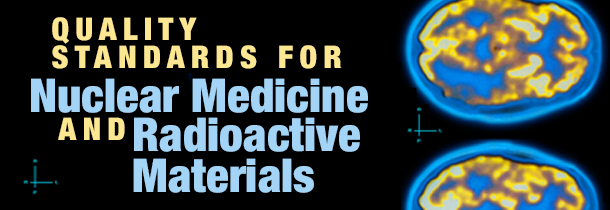
Nuclear medicine and medical imaging have transformed how many diseases are evaluated and treated in modern healthcare practice. Molecular imaging—such as positron emission tomography (PET)—has made it possible to view what is happening inside of the body at a molecular and cellular level, using non- or minimally-invasive approaches. This also enables physicians to determine how a body is functioning and to measure certain chemical and biological processes (e.g., tumor presence and activity detected through PET). Radioactive drugs containing small amounts of radioactive materials provide valuable diagnostic and patient management information in the treatment of certain cancers, heart disease, brain disorders such as Alzheimer’s and Parkinson’s disease and more.
Significant advances in medical technologies in recent decades combined with a deeper understanding of disease pathologies at a molecular level have made the use of advanced diagnostic imaging more important than ever. With the advent of personalized medicine (i.e., delivering the right treatment to the right patient at the right time), medical imaging and nuclear medicine will, without doubt, continue to play transformative roles in how we diagnose and tackle many diseases.
“State-of-the-industry” practices
A scientific, nonprofit organization that develops standards for medicine quality in the U.S., the U.S. Pharmacopeial Convention (USP) makes its public standards available for use by industry, academia, regulators, healthcare professionals and other stakeholders. USP’s published standards—in the form of specifications for identity, strength, quality and purity in drug product and ingredient monographs as well as information and procedures in general chapters—appear in the compendia, U.S. Pharmacopeia—National Formulary (USP–NF).
As medicines and the technologies used to make them evolve and improve over time, USP’s standards must also evolve. Part of USP’s ongoing effort to ensure that its standards support medicines of reliable and consistent quality is to undergo continuous review and revision of its standards. Working to ensure that its standards are up-to-date and reflect “state-of-the-industry” practices is a high-level priority of USP, and we are currently revising several general chapter standards related to radioactive articles.
Revising and modernizing standards for radioactive articles
This month, USP published a revised General Chapter <821> Identification and Assay of Radionuclides (formerly titled Radioactivity) in Pharmacopeial Forum (PF), USP’s online publication for posting and receiving comments to new and revised standards (access to PF is free and requires a one-time registration). General chapters are referenced in individual USP–NF product monographs, and chapters designated below-1000 typically include procedures that are to be conducted as part of a monograph standard’s specifications for quality. Approximately 125 USP–NF monographs related to nuclear medicines and radioactive materials includes references to <821>.
The revised chapter contains procedures and information about instrumentation used in the identification and assay of radionuclides, along with information on calibration and maintenance of instruments. Proposed changes to <821> also include requirements for detector resolution, allowed variations in instrument performance, and appropriate intervals for performance checks.
New General Chapters <1821> Radioactivity—Theory and Practice and <1823> Positron Emission Tomography—Information were also posted this month on PF for public comment. General Chapter <1821> describes types of radioactive decay and radioactive emissions, the use of radioactive standards for instrument qualification and calibration, and instrumentation for detection and measurement of radioactive emissions. General Chapter <1823> includes relevant information regarding PET radionuclides, production, quality assurance, and quality attributes of PET drugs that meet the needs of patients, research subjects, medical institutions, clinical researchers and other members of the PET community. All three general chapters include a glossary of terms commonly used in current practices.
Public comments sought
Receiving public comments on our evolving standards is a hallmark of USP’s long-standing and transparent standards-setting process. In order to develop standards that are robust, scientifically sound and reasonable, we must receive input from our stakeholders.
The deadline for the public to comment on PF on General Chapters <821>, <1821> and <1823> is November 30, 2015. We hope to hear from those of you involved in the nuclear medicine and medical imaging community on these proposed chapters.
Ravi Ravichandran, Ph.D., is a principal scientific liaison in USP Chemical Medicines. To gather feedback on its standards, USP works closely with stakeholder groups and organizations such as the Society of Nuclear Medicine and Molecular Imaging, a member organization of the U.S. Pharmacopeial Convention. USP’s member organizations guide and facilitate USP's work toward achieving its mission of improving global health through public standards and related programs that help ensure the quality, safety, and benefit of medicines and foods.


